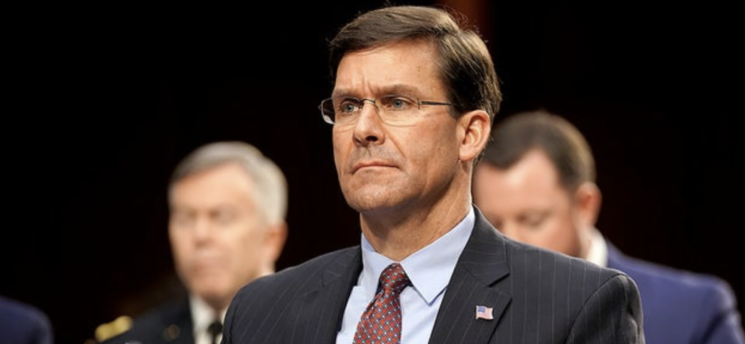This week, the Department of Defense (DoD) announced a new plan for our forces in Europe that will advance our implementation of the National Defense Strategy (NDS). The NDS guides our efforts in an era of great power competition to build a more lethal force, strengthen our alliances and attract new partners, and reform for greater performance – to include optimizing our operational footprint worldwide. With our new plan, the United States will reposition approximately 11,900 military personnel from Germany – from roughly 36,000 down to 24,000 personnel – in a manner that enhances the deterrence of Russia, strengthens NATO, and fulfills multiple related priorities.
This plan is part of a review of our Combatant Commands’ (COCOMs) missions and tasks to ensure DoD’s time, money, and manpower are directed toward our highest priorities. This process also implements our Immediate Response Force, Contingency Response Force, and Dynamic Force Employment enhanced readiness concepts, and moves us toward greater use of rotational forces from the United States, which bolsters our strategic flexibility and operational unpredictability.
President Trump’s decision to reduce our footprint in Germany accelerated U.S. European Command’s (EUCOM) review, enhancing ongoing efforts to reposition forces in Europe to be better situated for great power competition. As a result, EUCOM has delivered a strong plan that achieves the president’s direction while adhering to my five guiding principles for this effort: enhance United States and NATO deterrence of Russia; strengthen NATO; reassure allies; improve United States strategic flexibility and EUCOM operational flexibility; and, take care of our service members and their families throughout the process.
Of the 11,900 service members repositioning from Germany, nearly 5,600 will be repositioned within NATO countries, and approximately 6,400 will return to the United States, though many of these or similar units will quickly begin conducting rotational deployments back to Europe. As part of these changes, various United States headquarters will be consolidated in Europe outside of Germany, including, in some cases, at the same locations as their NATO counterparts in Belgium and Italy. This will strengthen NATO and improve the operational efficiency and readiness of more than 2,000 United States service members in these headquarters.
Moreover, nearly 4,500 members of the 2nd Cavalry Regiment will return to the United States, as other Stryker units begin continuous rotations farther east in the Black Sea region, giving us a more enduring presence to enhance deterrence and reassure allies along NATO’s southeastern flank. The 2,500 airmen based in Mildenhall, United Kingdom, who are responsible for aerial refueling and special operations – and who had been scheduled to re-base in Germany – will remain in the U.K., ensuring the uninterrupted readiness and responsiveness of these units. A fighter squadron and elements of a fighter wing will be repositioned to Italy, moving them closer to the Black Sea region and better capable of conducting dynamic force employments and rotational deployments to NATO’s southeastern flank.
In addition to these moves and the rotational forces that President Trump and Polish President Andrzej Duda announced in 2019, we also plan on rotating forward the lead element of the U.S. Army’s newly established V Corps headquarters to Poland, once Warsaw signs a Defense Cooperation Agreement and burden sharing deal, as previously pledged. There are – or may be – other opportunities as well to move additional forces into Poland and the Baltics.
DoD intends to implement these moves as expeditiously as possible, with some slated to begin within weeks, while other moves will take longer. Our actions at every step will be consistent with the aforementioned five principles, and with special attention given to the well-being of our most important resource: our service members and their families. Importantly, we will ensure throughout this process that no moves take place without thorough communication with our personnel and allies. We have been – and will remain – in close consultation with Congress, NATO, and directly affected allies as we implement changes.
The allies and partners of the United States have stood with us for decades to defend the international rules-based order and strengthen our collective security. Moreover, the size, composition, and disposition of United States forces in Europe has changed many times throughout history; we are now at another inflection point in the alliance’s history. Our realignment of United States forces in Europe constitutes a major strategic and positive shift – one that is wholly consistent with the NDS, and that will further strengthen our bonds with NATO, while enhancing deterrence of Russia and improving our strategic and operational flexibility. Our message to the world is clear: the United States military stands with our allies and partners in protecting the free and open international order, and, working together, we are ready and able to deter and defeat every threat.
——-
Mark T. Esper is the US secretary of Defense.
——-
The original article can be found @TheHill






Leave a Reply